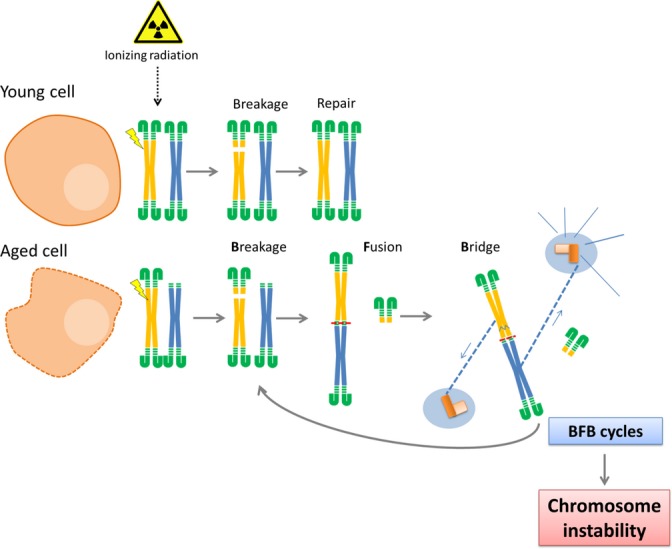Figure 2.

Telomere attrition in aging cells. Ionizing radiation induces new DNA double-strand breaks (DSBs), and thus, new opportunities for the uncapped chromosomes undergo unfaithful repair. When aging cells skip replicative senescence, they display a greater number of uncapped chromosomes, which are prone to produce rearrangements. They can undergo end-to-end fusions and DSB-end fusions between different chromosomes. When the two centromeres are pulled in different directions, dicentric chromosome can break, and this breakage results in further fusions followed by other bridges and, again, new breaks will arise. This process is known as the breakage–fusion–bridge cycle (BFB cycles), which leads to broad DNA amplification and progressive terminal deletions. Any of these outcomes lead to a rise in chromosome instability, which, in turn, can initiate or promote a carcinogenic process.
